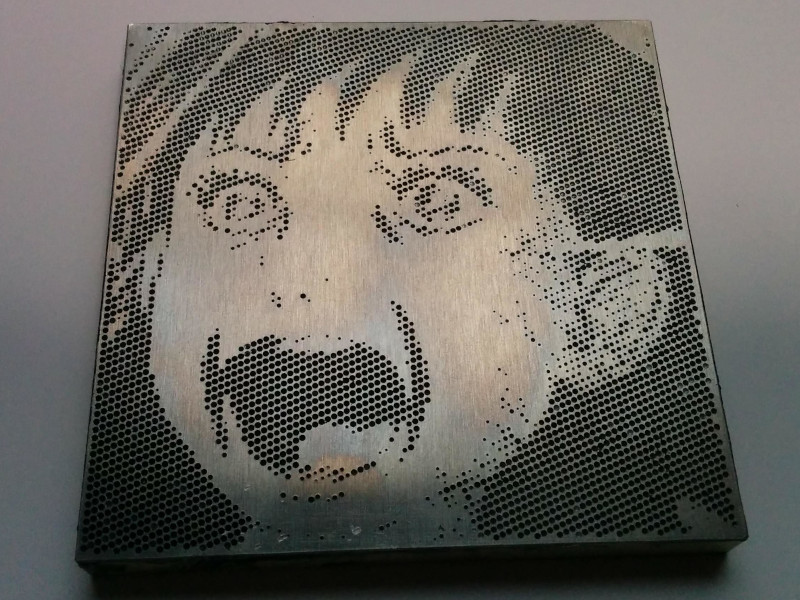I implemented the point method ('halftone') in photo2cnccut (the same as '--dot' or 'pointmode' in rastercarve), so I wanted to test it.
Initially, I was not interested in the method (not metal-cut-worthy), but I found, for some extremely expressive subjects, the point method actually looks better than the line method.

For me, it is very promising, but clearly not good enough. To trace minute colors and shapes, point radius got very small, and the picture lost the strong characters.
I want to bring in a violent resolution degradation, somehow closely related to physical cnc processes. But that would require more clever algorithms, probably with a bit more math. So I put it into the 'TODO'...
---
But let's first test the point method, if it works at all.

This is a highly popular comic frame in Japan. From "Baptism" 1974-76, by horror comic artist Umezu Kazuo.
This time I painted it the easiest way. Put on water acrylic paint from tube, wait 30 seconds, and wipe with parts-cleaner-sprayed-cloth.
There are some residue on the surface, with some points left unpainted. But I had the impression that 'wiping' is quite an art by itself, and if one gets really good at it, it may be suffice to produce professional results.
Also, it was a good occasion to test the customization feature of my script. Since the original is a black and white comic, I didn't want every float size of points. With some try and error, I limited the number of sizes to 5, omitting smaller (whiter) half altogether. It made the cnc running time faster too.
The script automatically reads and uses the custom class from file 'p2cmodule.py', so the needed code was only this:
from photo2cnccut import line
class Data(line.Data):
"""Remove whiter parts, and limit the variations of intensity."""
def process_intensity(self, intensity):
if intensity > 158:
return None # skip
return round(intensity / 32) * 32---
TODO:
If the number of sizes is just 5 or so, I don't need a special kind of cutting tool, with a sensitive tool tip. Just normal drills with that number of sizes (diameters) would suffice.
And that would also 'solve' the painting problem. If the drill cuts are sufficiently deep, they will look black by shadow.